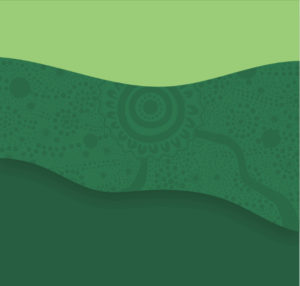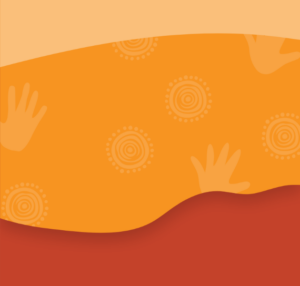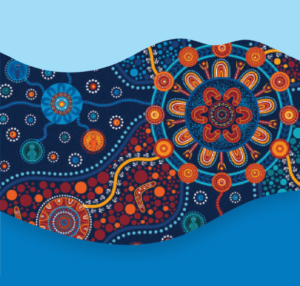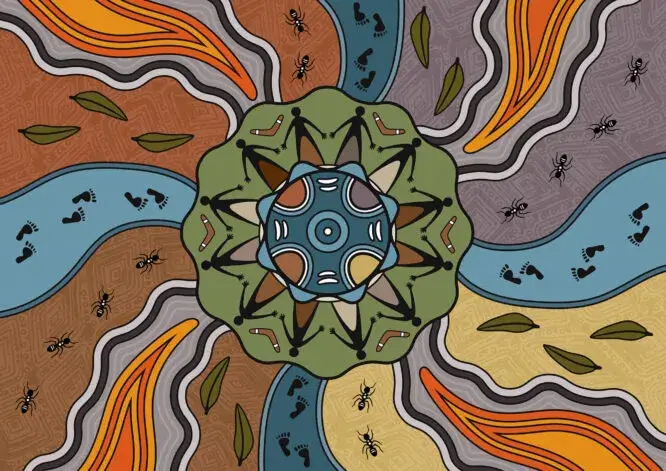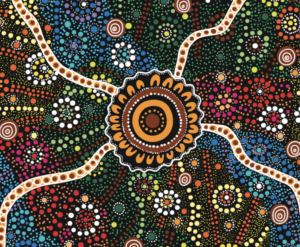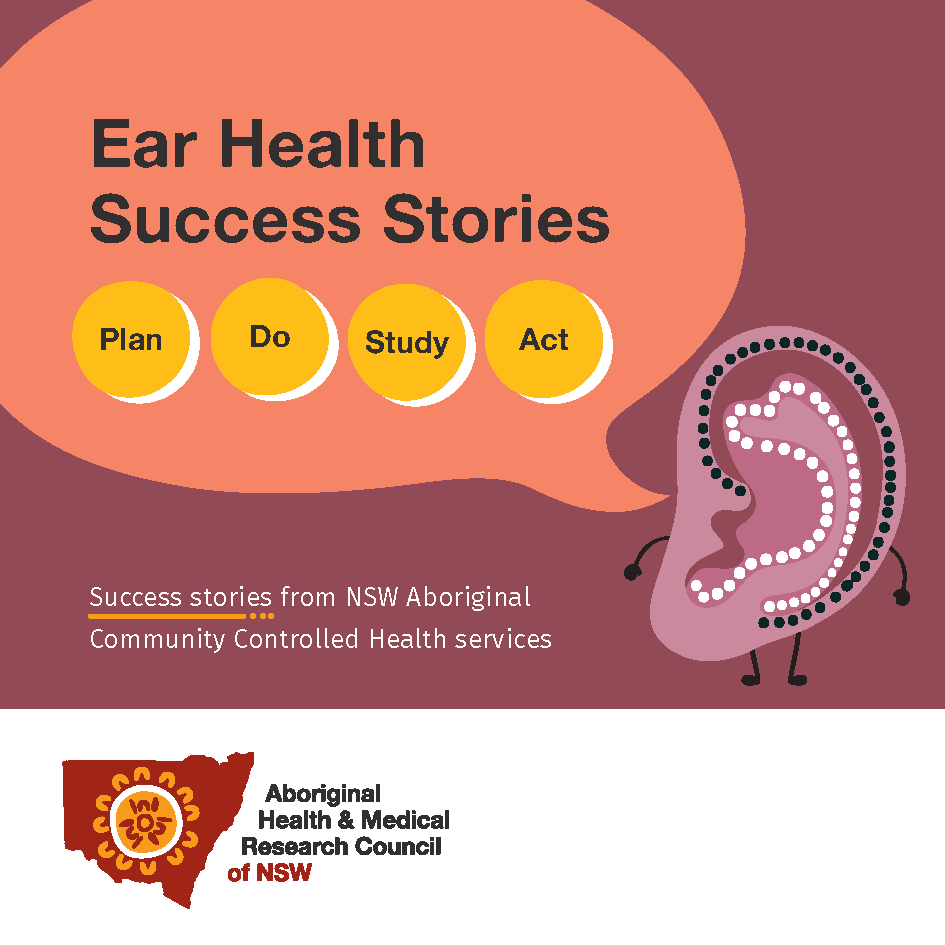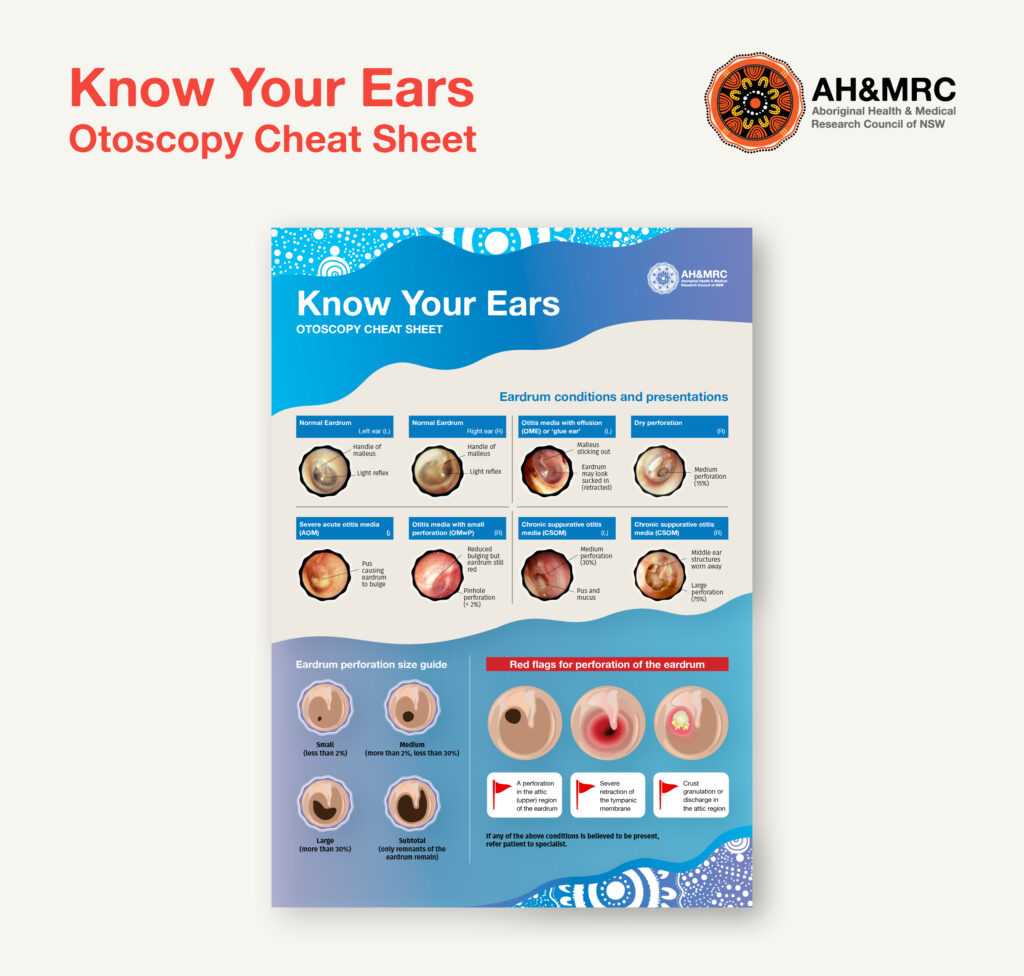The Ear Health Coordination Program (EHCP) is funded by the Department of Health’s EHC Program (NACCHO). Its objectives include:
- Improving health outcomes among Aboriginal and Torres Strait Islander people.
- Ensuring timely access to high-quality, culturally appropriate primary health care.
- Providing system-level support to the Aboriginal and Torres Strait Islander primary health care sector to enhance service effectiveness and efficiency.
The EHCP aims to enhance ear and hearing health, particularly in children and youth, by integrating regular ear health monitoring and follow-up within primary health care clinics. Its primary goals are to improve the monitoring and treatment of ear and hearing health in primary care settings, specifically focusing on facilitating access to quality, culturally safe ear and hearing health services for Aboriginal and Torres Strait Islander children before they begin primary school.
To achieve these objectives, the EHCP activities have been collaboratively designed by the Aboriginal Health and Medical Research Council of NSW (AH&MRC) and the NSW Rural Doctors Network (RDN). The program builds upon the strengths of both agencies and emphasizes establishing and supporting collaborative partnerships, including the state and territory-wide Advisory Group – Aboriginal Hearing Health. It seeks to understand community needs identified through EHCP analysis and implement solutions via regional coordination activities.
Background
Childhood hearing loss can significantly hinder the development of verbal and written communication skills, impacting lifelong social, learning, and behavioral aspects. Associated with reduced school performance and language skills, hearing loss affects speech, behavior, and mental health, leading to higher rates of unemployment and incarceration. Otitis media, an inflammation and infection of the middle ear, is a prevalent childhood disease, potentially causing severe complications.
Aboriginal communities in Australia face a disproportionately high prevalence of hearing loss and ear diseases, with chronic middle ear disease rates nearly ten times higher than the global average set by the World Health Organization. Social disadvantage significantly contributes to these disparities in health outcomes. Despite higher prevalence rates, limited attention has been directed towards addressing these issues in New South Wales (NSW), where the prevalence of ear-related problems tends to increase in more remote areas.
Ear Health Key Performance Indicators (nKPIs):
The EHCP aims to collaborate with various stakeholders, including Aboriginal Community Health Services, National Aboriginal Community Controlled Health Organisation (NACCHO), fund holders/grantees of Australian Government ear health initiatives like Hearing Australia, state/territory health authorities, Primary Health Networks, relevant clinicians, early childhood, and community service providers.
Additionally, there are training programs available for ear health professionals through organisations like Benchmarque Group, TAFE NSW EarTrain Hearing Program, and TAFE Digital – offering certification courses in Audiometry.
Further resources and information are accessible through various platforms like the Australian Government’s Ear Health website, Care for Kids Ears, PLUMS & HATS, and Otitis Media Guidelines, providing tools, guidelines, and educational materials related to ear health.
- Benchmarque group All Courses | The Benchmarque Group
- Eartrain Tafe NSW EarTrain Hearing Program for Professionals – TAFE NSW
– TAFE Digital – AFB – Cert IV in Audiometry (1).pdf
Tools and Resources:
- Ear Health by the Australian Government – This website provides information, initiatives and resources about Ear Health in Australia.
- Care for Kids Ears – This website aims to raise awareness of ear disease and hearing loss in Aboriginal and Torres Strait Islander communities. It provides free access to resources for parents and carers, teachers, early childhood groups, and health professionals.
- PLUMS & HATS – This website provides simple checklists to help health and early childhood workers ask the right questions about bub’s listening and yarning skills.
- Otitis Media Guidelines | Australian Government Department of Health and Aged Care The 2020 Otitis Media Guidelines assist primary health care providers with the delivery of comprehensive, effective and appropriate care for Aboriginal Torres Strait Islander people with otitis media (ear infections).
Resources:
- Kids Health Information : Ear infections and glue ear (rch.org.au)
- Care for Kids’ Ears – Order resources | Australian Government Department of Health and Aged Care
- Download Plum and Hats – Plum & Hats (nal.gov.au)
– Resources and Links – Plum & Hats (nal.gov.au) - – https://youtu.be/NOr13UaSQzg The Spirit of sound storybook reading with Luke Carroll
– https://youtu.be/ByLB88zanek CATCHING DRAGON FLIES (short flim) - Online Hearing Test App For Kids | Supported by Department of Health (soundscouts.com)
- Ear and Hearing Coordination Program – Needs Analysis Report Sept 2020.pdf
Tools:
Hearing health equipment:
- “Have you had your ear health training” Access to hearing health equipment –
- Hearing health equipment – Brochure/contacts and access to forms Sonic Equipment Brochure A4 digital flyer.pdf
- For more information email: mkailahi@ahmrc.org.au
Sign Up
- Stay informed with RDN & AHMRC Public Group 109 members – Ear & Hearing Health Group Group: Ear & Hearing Health group | Rural Health Pro
Eye Health
The focus extends to community engagement and promotion activities to improve awareness and connections to subsidized spectacles schemes for eligible Aboriginal and Torres Strait Islander people in NSW. Efforts are directed towards improving access to subsidized spectacles, aiming to learn from current practices to enhance future service delivery.
Key stakeholders in the realm of Eye Health include organizations like Vision 20/20 Indigenous Eye Health, Indigenous Eye Health Unit, Brien Holden Foundation, Fred Hollow’s Foundation, and Rural Doctors Network, among others. They provide resources, guidelines, and programs to address eye health disparities among Aboriginal and Torres Strait Islander communities.
- Vision 20/20 Indigenous Eye Health – Vision 2020 Australia
- Indigenous Eye Health Unit (unimelb.edu.au)
- Brien Holden Foundation – Australia Program | Brien Holden Foundation
- Fred Hollow’s Foundation – What We Do | Indigenous Australia | Fred Hollows Foundation
- Rural Doctors Network – RDN – Medical outreach programs to NSW communities (nswrdn.com.au)
Tools & Resources:
Several toolkits, documents, and schemes have been developed to streamline the provision of subsidized spectacles. Resources like the National Subsidised Spectacles Scheme (NSSS) and various reports are available to support the improvement of eye health services for Indigenous communities in NSW. Websites and alliances such as Sight For All, First Nations Eye Health Alliance, and research initiatives further contribute to promoting eye health and addressing issues like trachoma.
Overall, these programs and resources collectively aim to bridge the gaps in health disparities, particularly focusing on ear and eye health among Aboriginal and Torres Strait Islander communities in Australia.
- 1.1. Eye_&_Vision_Care_Toolkit_HOW-TO-GUIDE.pdf*
- National Subsidised spectacles scheme (NSSS) Optometry-Australia-Principles-for-nationally-consistent-subsidised-spectacle-schemes-Recommended-implementation-standards-FINAL.pdf (vision2020australia.org.au)
- nsw-spectacles-program-ineligible-outcome-notification.docx (live.com)
- List-of-Providers-090623.pdf (visionaustralia.org)
- Sight For All Aboriginal Eye Health – Sight For All
- Eye and vision health for Aboriginal and Torres Strait Islander people | Australian Government Department of Health and Aged Care
- Strong-Eyes-Strong-Communities-A-five-year-plan-for-Aboriginal-and-Torres-Strait-Islander-eye-health-and-vision-2019-2024.pdf (vision2020australia.org.au)
- First Nations Eye Health Alliance First Nations Eye Health Alliance (fneha.com.au)
- https://mspgh.unimelb.edu.au/centres-institutes/onemda/research-group/ieh#trachoma
–Key health report released detailing aspirations of Aboriginal and Torres Strait Islander professionals for eye health of First Nations People by 2030. (unimelb.edu.au)
